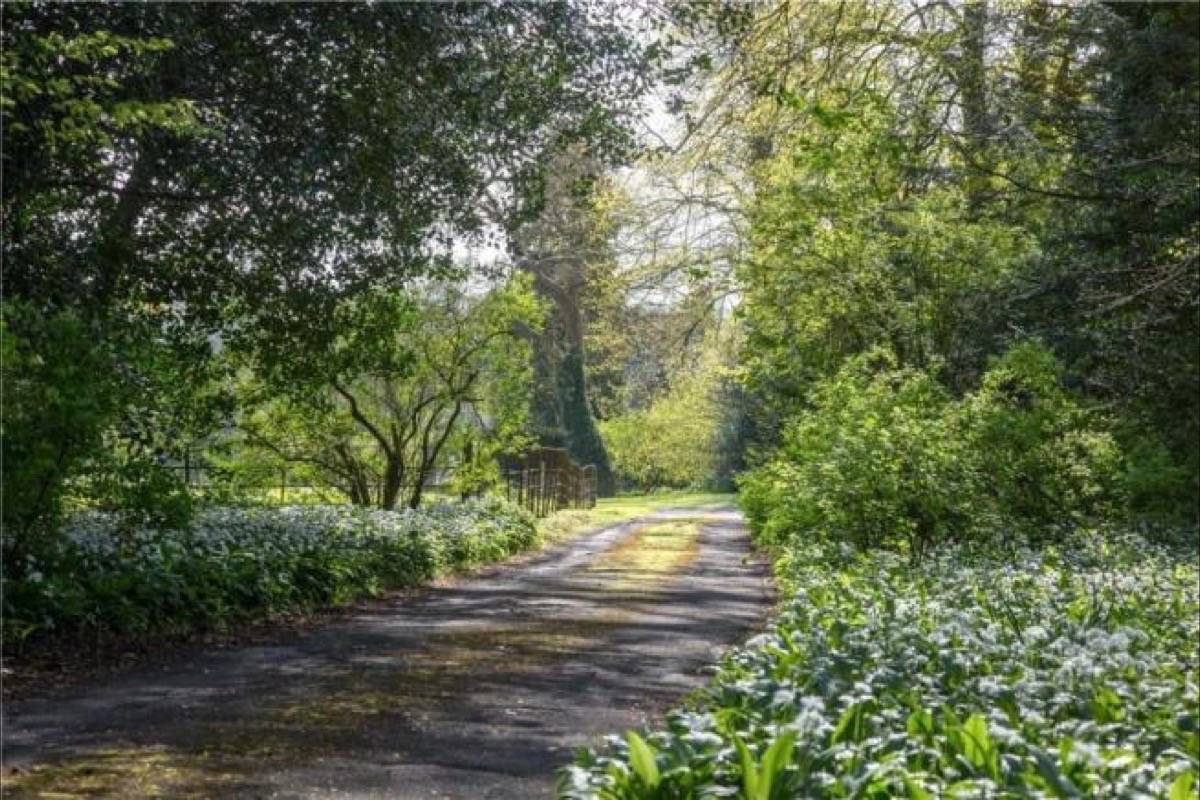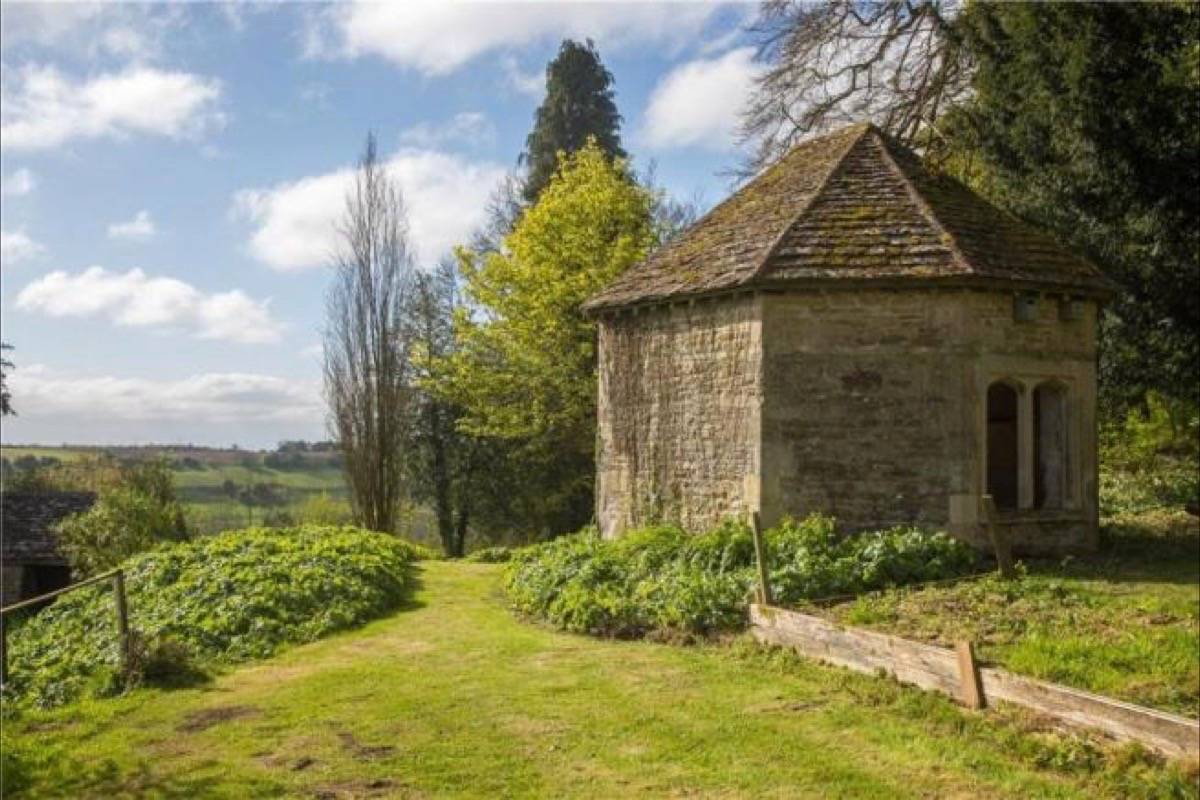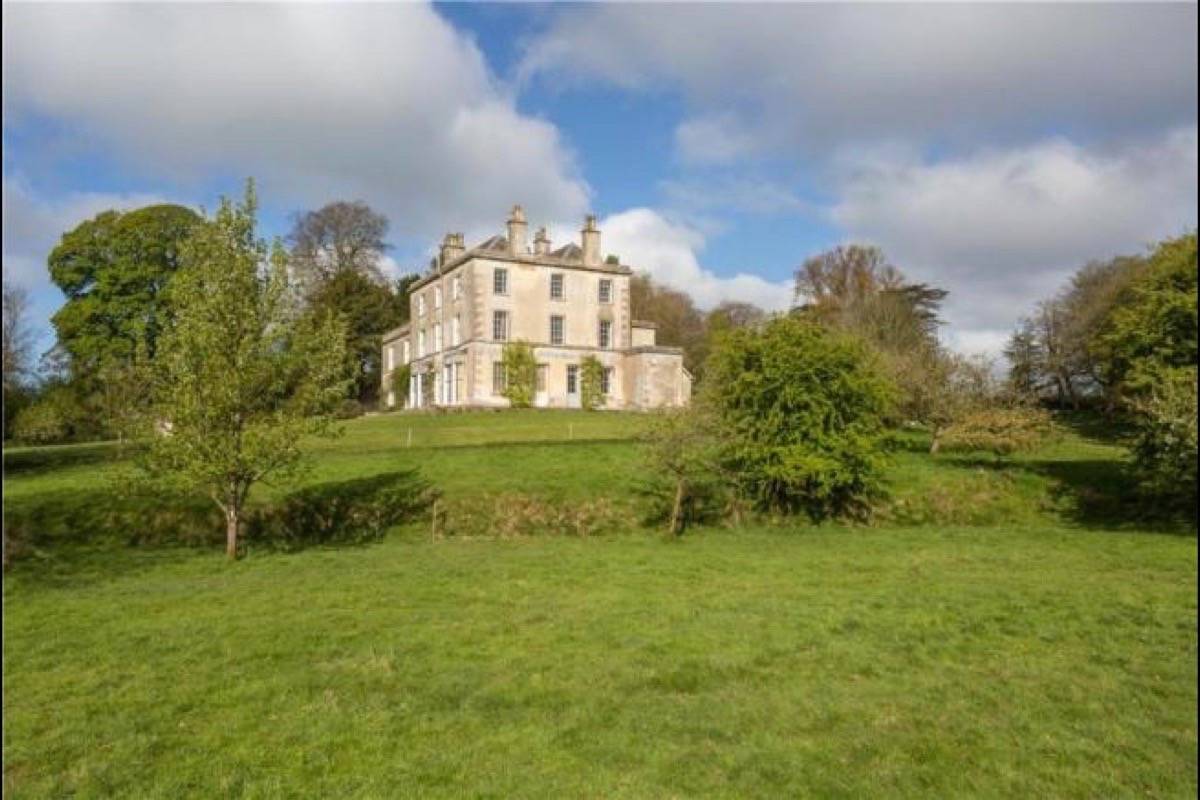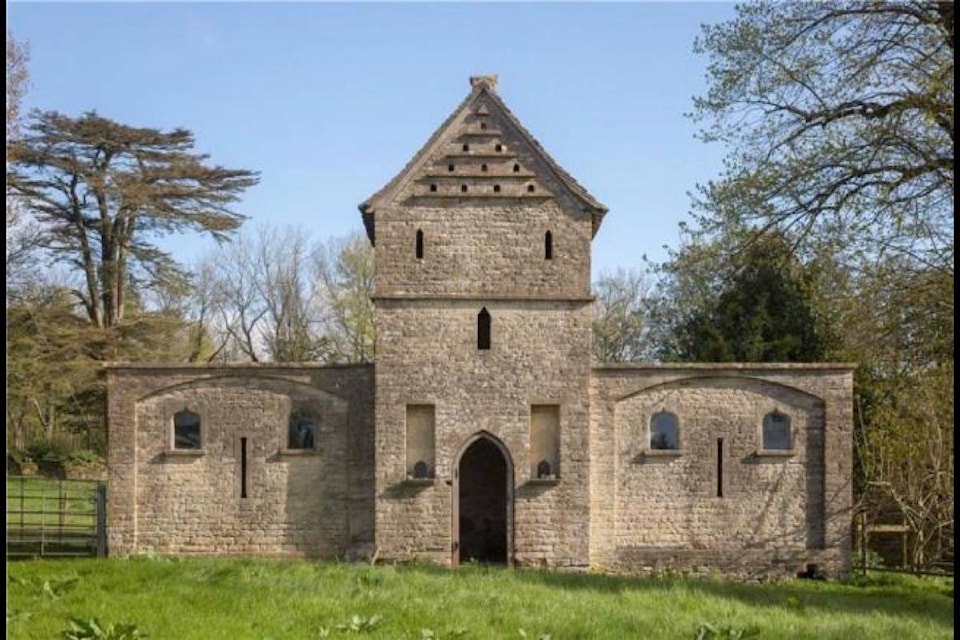Ashcroft House, in the picturesque Cotswolds about 100 miles west of London, has been listed for sale by the estate agency Knight Frank, and the listing agent had no idea that the house gave its name to the town of Ashcroft in the B.C. Interior.
The property consists of a main house with eight bedrooms, multiple reception rooms, attic, wine cellar, and a self-contained apartment over three floors; three three-bedroom cottages; outbuildings; a tennis court; and 50 acres of land.
The main house was built in the late 17th/early 18th century, with Georgian additions, and boasts beautiful views of the surrounding countryside. It is approached by a long drive (from Ashcroft Road) flanked with parkland and mature trees. Two small stone buildings on the property built in the early-to-mid 18th century are identified as a former game larder and a dovecote; the latter was intended to house doves or pigeons, which were an important source of meat and eggs.
In the 1860s, Ashcroft House was the home of the Revd. A.G. Cornwall, a chaplain-in-ordinary to Queen Victoria and a descendant of the Earl of Cornwall. In 1861 his son Henry, who had recently completed a degree in Classics at Cambridge, developed a case of gold fever after reading an account of the discovery of gold in the Cariboo region of the then-new colony of British Columbia. He persuaded his brother Clement, who had just been called to the bar as a lawyer, to travel with him to the colony, where the pair intended to make their fortunes in the goldfields and then return to England.
When they arrived, however, they found that most of the mining claims had been staked. Undaunted, they realized that there were other opportunities for an enterprising pair. Possibly inspired by Judge Matthew Begbie’s description of land near the Thompson River—“The entire country resembles a vast park attached to a nobleman’s mansion in England”—the brothers purchased land about two miles from the Thompson River, just south of Cache Creek.
There the brothers built houses, and eventually a grist mill and sawmill; they also ran a large herd of cattle on a property that eventually grew to more than 6,000 acres, and a post office was situated there. When the Cariboo Wagon Road was run through their property in 1862, the Cornwalls built a roadhouse, which soon became one of the most popular stopping points for travellers along the road, a place where people could relax in leather armchairs and read several-months-old copies of the London Times newspaper.
The brothers christened the entire property “Ashcroft”, after their home in England. When a town was built nearby on the Thompson River in the 1880s, when the Canadian Pacific Railway came through and built a depot, the post office was moved there, taking Ashcroft with it as the eventual name of the new settlement. The Cornwalls rechristened their property “Ashcroft Manor”, by which name it is known today, and never did return to England. Both went on to play major roles in the history of B.C.; Clement became the Lieutenant-Governor of the province in 1881.
Bruce Tolmie-Thompson, a partner with Knight Frank, had no idea that Ashcroft House had given its name to a town in B.C. until contacted by The Journal, and seemed delighted with the news. He says that while the apartment in the main house was occupied until three years ago, the house itself has been unoccupied for two decades. “It’s water and wind tight, and a new boiler was put in recently, so it’s warm in winter, but the wiring and plumbing are 40 or 50 years old, and the kitchen is very dated. The bathrooms too; you have one bathroom serving four bedrooms, and these days people want ensuites.”
Two of the three cottages also need work (one is currently occupied by tenants), and the tennis court needs resurfacing. A word of warning, however, to a prospective owner who wants to tackle the renovations him- or herself. The main house, along with the game larder and dovecote, is a Grade II listed building, which means that it is of special interest, warranting every effort to preserve it. Listed buildings cannot be demolished, extended, or altered without special permission from the local planning authority, which stipulates what can and cannot be done. Tolmie-Thomson notes that consent must also be obtained from English Heritage.
“Grade II is the least severe listing, and probably pertains mostly to the façade and some external features. It doesn’t usually affect sales. And it’s quite rare to find a house like this in this condition,” he adds. Changes have clearly been made to the exterior — “A lead-capped awning over the terrace around the house has been removed” — but he notes that many houses of similar vintage have undergone extensive interior changes over the course of decades, as new owners move in and do renovations.
“Ashcroft House still has the original fireplaces, cornice-work, and plaster-work. Whoever buys it can leave their mark.”
Whoever buys it will also have to have deep pockets. The property is listed for £3.5 million (Cdn$6 million). To see the listing for Ashcroft House, with more pictures, go to .
editorial@accjournal.ca
Like us on and follow us on






